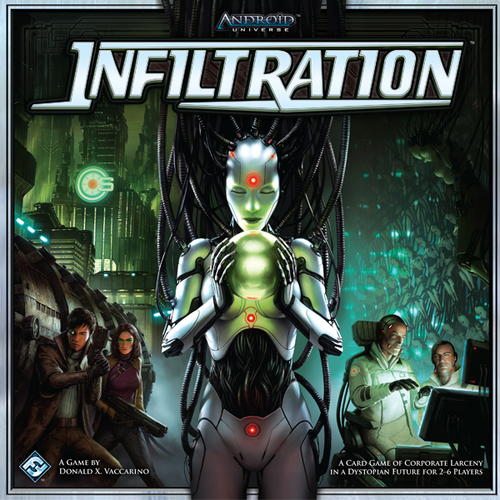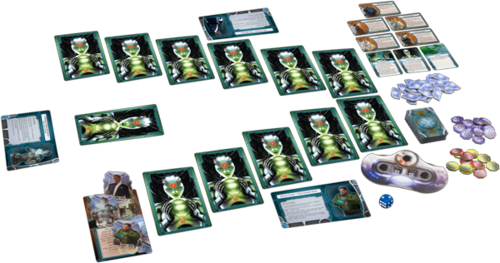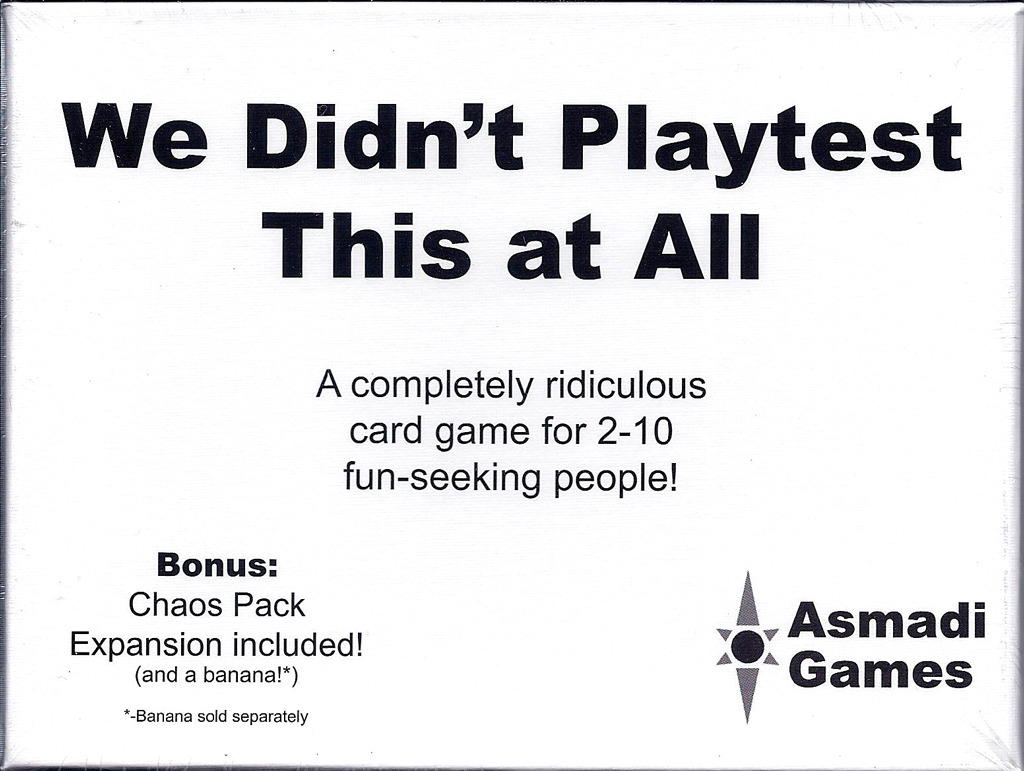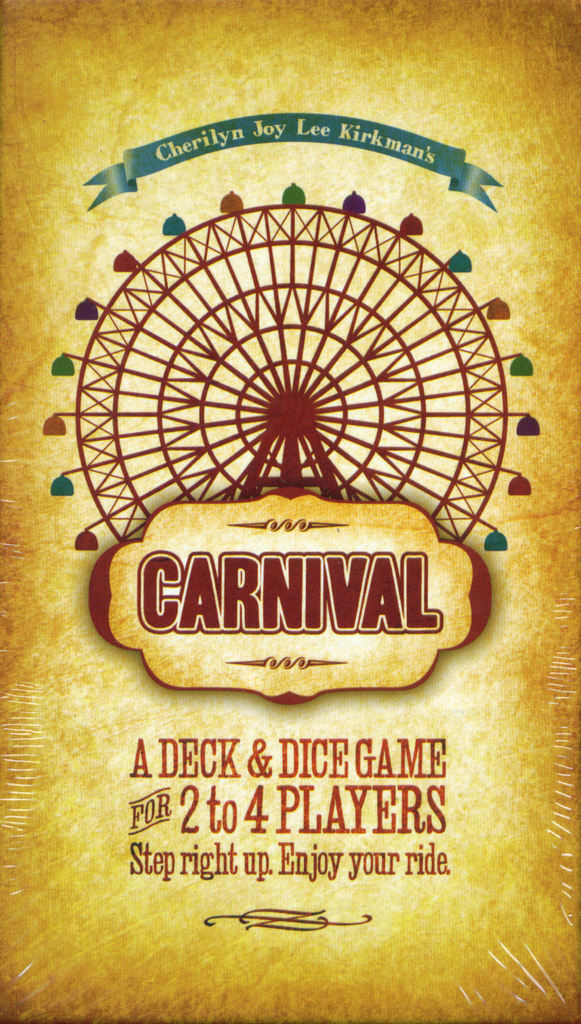 Donald X. Vaccarino is the creator a little game called Dominion. It’s ridiculously popular—it’s like he invented a way to just legally print money.
Donald X. Vaccarino is the creator a little game called Dominion. It’s ridiculously popular—it’s like he invented a way to just legally print money.
His latest design is Infiltration—a fast filler for 2-6 players that has you in the position of breaking into a corporation to steal as much as you can before the guards catch you.
You lay out the cards for the “first level” in a stairstep up to the right, and then a “second level” to the building back up the left.  On each turn, players choose a card from their hands, and then simultaneously reveal them. It might allow a player to move to the next room. Or take some of the loot in a room. And some rooms have locks or scientists in them, and you can play cards to interact with them. There are also some special cards that give you something extra and cool and unique to do.
On each turn, players choose a card from their hands, and then simultaneously reveal them. It might allow a player to move to the next room. Or take some of the loot in a room. And some rooms have locks or scientists in them, and you can play cards to interact with them. There are also some special cards that give you something extra and cool and unique to do.
Here we run into the first problem: turn order can be hard to overcome. Turn order changes every turn, but if you’re at the end of the pack, you’ll find yourself scrambling to get to good rooms and get some of the loot.
In the game I played, one player played a card that let her move into a room and interact with it—normally you can only do one or the other. Unfortunately, interacting with the room forced her to end her run, so she was out of the game.
There’s a built-in timer to the game. A threat number increases as the game goes on, and when it reaches a certain level, the guards catch anyone still in the building. So you have to figure out how much loot to grab before you high-tail it out. The weird thing is, there’s no trap door on the second-level set of cards. So while there’s cool stuff the further in you go, it’s almost impossible to get that stuff and still get out.
This also led to another problem with the game. One player was in the kingmaker role: he ends it early and hands Player X a victory, or lets it go one more round and it's between Player X and me. He can't do ANYTHING to better his position. He ended it—still not sure why
So only two people in our game escaped—one who used a special card to escape, and the other was the woman from way earlier in the game. If the player who used the special card hadn’t been able to get out, the woman would have won…with zero points. That’s ridiculous to me.
The theme of the game is stealing. I think the game justifies it because you’re stealing from a corporation, and CORPORATIONS ARE ALWAYS EVIL, AND ENJOY BOILING PUPPIES ALIVE IN THE TEARS OF KITTENS. I’m no apologist for corporations, but come on… So be aware you’re stealing. I’m not against playing the game because you’re stealing; I’m against playing it because it’s a bad game.
I think ultimately this game suffers from Stephen King Syndrome: Donald X has had enough wild success that people aren’t willing to push back against some of the bad ideas here. If you don’t mind some swinginess, you might enjoy this. And the theme is pretty cool. And it’s certainly a fast game.
Me, I think I’ll wait for the upcoming Netrunner game to release my inner hacker.















 Richard Garfield is one of the most influential game designers out there—despite the fact that he’s not very prolific. He'd be influential even if he’d only designed the one game he's best known for: Magic The Gathering.
Richard Garfield is one of the most influential game designers out there—despite the fact that he’s not very prolific. He'd be influential even if he’d only designed the one game he's best known for: Magic The Gathering.













